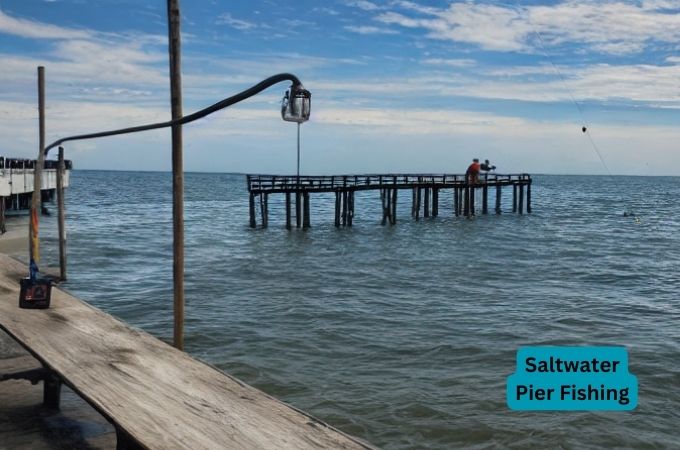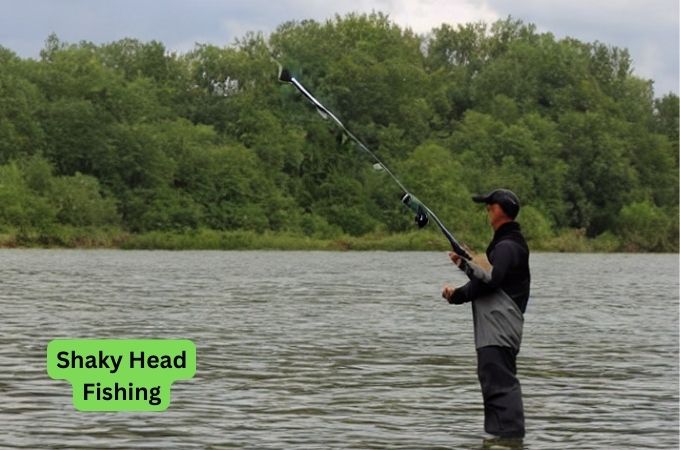Stringing An Open Face Reel: Your Ultimate Guide
Are you a fishing enthusiast wondering how to string an open face reel? Look no further, because we’ve got you covered! Stringing an open face reel is a fundamental skill that every angler should know. It ensures smooth casting and retrieval, maximizing your chances of landing that trophy fish. In this article, we’ll guide you step-by-step through the process, from selecting the right fishing line to properly spooling it onto your reel. So grab your reel and let’s dive in!
Stringing An Open Face Reel:
Introduction:
Stringing a reel correctly not only ensures smooth casting and optimal performance but also prevents line tangles and breakages. In this comprehensive guide, we will walk you through the step-by-step process of stringing an open-face reel, from selecting the right fishing line to properly spooling it onto your reel. Whether you’re a beginner or an experienced angler, this guide will provide you with the knowledge and techniques to successfully string your open-face reel.
Section 1: Choosing the Right Fishing Line
When it comes to selecting the fishing line for your open face reel, there are several factors to consider. The type of fishing you plan to do, the targeted fish species, and the fishing conditions all play a role in determining the appropriate line. Here are some popular types of fishing lines:
- Monofilament Line: Known for its versatility and affordability, monofilament line is a popular choice for various fishing techniques. It offers good knot strength and is easy to handle.
- Braided Line: With its high strength-to-diameter ratio, braided line is excellent for heavy-duty fishing. It has minimal stretch and high sensitivity, making it ideal for detecting subtle bites.
- Fluorocarbon Line: Fluorocarbon line is virtually invisible underwater, making it an excellent choice for clear water fishing. It also has low stretch and high abrasion resistance.
Section 2: Checking the Reel and Spool Compatibility
Before you start spooling your open face reel, it’s crucial to ensure that the reel and the fishing line spool are compatible. Here’s what you need to consider:
- Line Capacity: Check the reel’s line capacity specifications to determine the appropriate amount of line needed for your fishing needs. Overfilling or underfilling the spool can affect casting distance and line performance.
- Spool Size: Take note of the reel’s spool size, as it determines the maximum line thickness the reel can accommodate. Using a line that is too thick can lead to line twist and tangles.
- Backing Line: Consider using a backing line to fill the spool partially before attaching the main fishing line. The backing line adds extra volume and prevents slippage when the main line is under tension.
Section 3: Getting Ready to Spool
Once you have chosen the appropriate fishing line and ensured compatibility, it’s time to prepare for spooling. Follow these steps:
- Gather Your Tools: You will need a pair of scissors or line cutters to trim the line and a rod with a reel seat to hold the reel securely.
- Clean the Reel: Wipe down the reel and spool to remove any dirt or residue, ensuring smooth operation during the spooling process.
- Inspect the Line: Check for any nicks, abrasions, or weak spots along the fishing line. These can compromise the line’s strength and result in breakages during fishing.
Section 4: Attaching the Backing Line (Optional)
If you have chosen to use a backing line, follow these steps to attach it to your open face reel:
- Secure the Reel: Attach the reel securely to a rod using a reel seat or by placing the rod in a rod holder.
- Attach the Backing Line: Tie a secure knot, such as an Arbor Knot, to connect the backing line to the reel’s spool. Ensure the knot is tight and trim any excess line.
- Spool the Backing Line: Slowly and evenly spool the backing line onto the reel, making sure there are no line twists or tangles. Apply light tension to the line with your fingers as you spool.
Section 5: Spooling the Main Fishing Line
With the backing line (if used) in place, it’s time to spool the main fishing line onto your open face reel. Follow these steps:
- Prepare the Line: Attach the main fishing line to the backing line using a secure knot or a line-to-line connection, such as the Double Uni Knot or the Albright Knot.
- Tighten the Knot: Ensure the knot is tightened properly and trim any excess line, leaving a small tag end.
- Spool the Line: Hold the fishing line tension with your fingers and slowly and evenly spool the line onto the reel, following the manufacturer’s recommended direction. Apply light pressure with your thumb to prevent line twist.
- Fill the Spool: Continue spooling until the reel’s spool is adequately filled, leaving approximately 1/8 inch of space below the spool rim to prevent overfilling.
Section 6: Finishing the Spooling Process
Once the main fishing line is properly spooled, complete the process by following these final steps:
- Secure the Line: Wrap the remaining line around the reel’s spool arbor a few times and tie a secure knot, such as the Arbor Knot, to prevent any slippage.
- Trim Excess Line: Cut off any excess line, leaving a small tag end of about 1/4 inch.
- Test the Line: Double-check the line’s tension and ensure it is properly seated on the spool. Pull out a few yards of line and test its integrity by applying gentle pressure and inspecting for any line twists or tangles.
Section 7: Maintaining Proper Line Tension
Proper line tension is crucial for smooth casting and effective fishing. Here are some tips for maintaining the right tension:
- Regularly Check the Line: During fishing sessions, periodically check the line for any signs of wear, fraying, or damage. Replace the line if needed.
- Adjust the Drag: Set the reel’s drag system according to the targeted fish species and fishing conditions. The drag should provide enough resistance to tire the fish but still allow line to be released smoothly during a fight.
- Avoid Overfilling: Be mindful not to overfill the spool, as it can result in increased line twist and reduced casting distance.
Section 8: Practice Casting and Reeling
Once your open face reel is properly strung, take some time to practice casting and reeling. Familiarize yourself with the reel’s drag system, learn how to use the bail arm, and practice smooth line retrieval. This will help you get comfortable with your setup and improve your overall fishing experience.
Section 9: Troubleshooting Common Line Issues
Despite your best efforts, line issues may still occur while fishing. Here are some common problems and their potential solutions:
- Line Twist: If you notice line twisting, you can reduce it by manually flipping the line off the spool and allowing it to untwist. Alternatively, re-spool the line following the recommended direction on the reel.
- Tangled Line: Untangle line snags by patiently and gently working through the tangle. Avoid pulling forcefully, as it can cause further entanglement.
- Line Breakages: If the line consistently breaks, inspect for any weak spots or damage. Replace the line if necessary, ensuring the new line matches the reel’s specifications.
Faqs for Stringing An Open Face Reel:
You can use various types of fishing lines, such as monofilament, fluorocarbon, or braided line, depending on your preferences and fishing conditions.
To attach the line, first, locate the line entry point on the reel’s spool. Pass the line through any guide or hole and tie a secure knot to prevent it from slipping or unraveling.
The amount of line you should put on the reel depends on the reel’s capacity and the type of fishing you plan to do. As a general guideline, fill the spool up to about 1/8 inch from the rim to avoid overfilling.
To spool the line correctly, hold the line with gentle tension and use your free hand to rotate the reel handle. Make sure the line is winding evenly onto the spool and avoid any twisting or tangling.
It is generally recommended to stretch the line before spooling it onto the reel. This process straightens the line and reduces memory, preventing it from coiling or tangling during casting.
It is a good practice to rest your open-face reel regularly, especially if you fish frequently. The frequency depends on various factors such as line conditions, fishing conditions, and personal preference. As a general guideline, consider restringing at least once or twice a year.
Final Thoughts:
To string an open-face reel, follow these steps: start by attaching the line to the spool using an arbor knot. Next, pass the line through the rod guides, making sure it does not twist. Then, close the bail arm and manually crank the reel handle to wrap the line evenly on the spool. Finally, test the line tension and adjust if necessary. By mastering the process of stringing an open-face reel, anglers can ensure smooth and efficient casting and retrieval. So, next time you need to string an open-face reel, simply follow these steps for a hassle-free experience.





